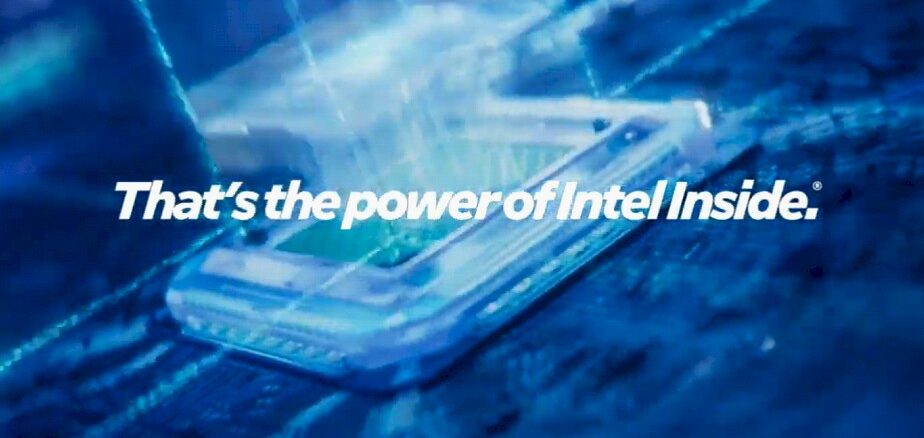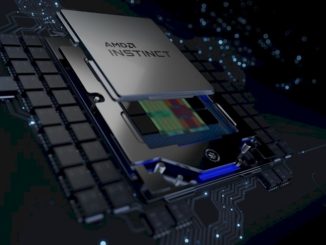
It has been two and a half months since new chief executive officer Lip-Bu Tan gave the keynote at Intel’s Vision 2025 event, and the company has been relatively quiet by its own standards over the past several decades as Tan gets the lay of the land and tries to plot out the course of the company to rebuild its foundry business and reorient and focus its chip design and sales business.
Tan is an engineer – albeit a nuclear engineer, but that is perhaps appropriate if you think about fission and fusion a little bit – and has promised to get Intel back to its engineering roots after many waves of marketing and sales people led the company astray over the past decade and it did not mind the foundry store, which fell behind Taiwan Semiconductor Manufacturing Co in an embarrassing – and if Intel is not lucky a little bit – a permanent way. Fixing Intel may be the biggest engineering challenge in the entire technology market right now, but as Tan explained back in April, he is doing it because he admires and loves this venerable company. (To get some insight in Tan, read our coverage of his CEO appointment at Intel from the middle of March.)
That means defining the mission and getting the right people in place to complete that mission.
To that end, that means right off the bat getting an engineer in charge of sales and marketing. And so Greg Ernst, who got his bachelor’s in electrical engineering from the University of Texas at Austin back in 1999, is now the company’s chief revenue officer. He reports directly to Tan.
As far as we can tell, Ernst joined Intel right after graduation, and by 2005 was made an account executive and business development manager for Intel’s Dell account, which obviously one of the most important relationships that Intel has. Ernst became director of engineering and new product development for the Dell account in April 2010, was put in charge of the Cisco Systems account team in May 2012, and led the Hewlett Packard Enterprise account starting in January 2014. In January 2018, Ernst was tapped to be general manager and vice president in charge of the sales and marketing organization at Intel in the United States, and was made general manager of the Americas region in January 2022.
At the end of April, Christoph Schell, who was brought into Intel by former CEO Pat Gelsinger in May 2022 to be chief commercial officer and head of its Intel’s Sales Marketing and Communications Group, resigned from Intel and took a job as CEO at a German company called Kuka Group, which makes robots and automated manufacturing systems and which is 125 years old. Kuka has nearly 15,000 employees and had €3.73 billion in sales in 2024; it has operations in Germany, the United States, China, and Hungary.
Schell was among the most energetic of Intel’s executives, but was not an engineer. Rather, Schell has business administration and management degrees from Neoma Business School in France and ESB Reutlingen in Germany. He held numerous management jobs at HP in printers and PCs, and rose to be chief commercial officer of HP. (Not Hewlett Packard Enterprise, the datacenter half of the formerly larger HP.)
Back in April, Sachin Katti, senior vice president of Intel’s Network and Edge Group, talked about the AI opportunity for Intel and others but made no commitments to products. Katti got his bachelor’s degree in electrical engineering from the Indian Institute of Technology and his PhD in computer science from MIT, and after a few academic jobs was co-founder and CEO at Kumu Networks, a wireless networking company. He is also a professor of computer science at Stanford University, and became chief technology officer for the NEX Group at Intel in November 2021.
In April of this year, Katti was named chief technology officer and AI officer for all of Intel. And now, he is getting some help to bolster Intel’s technical chops.
First off, Tan has brought in Srinivasan Iyengar, an expert in designing chips, from Cadence Design Systems, a company that Tan ran from 2009 through 2021 and, importantly, reorganized and saved from itself. Iyengar has been named a senior vice president and an Intel Fellow right off the bat, which gives him great sway as a technologist inside of the company.
For the past six years, Iyengar has been leading the Silicon Engineering Team at Cadence, and he has been a Cadence Fellow since 2015, which means, among other things, that Tan and Iyengar are well acquainted with each other. Before this, Iyengar was a distinguished solutions architect at the chip design toolmaker and has held various account director positions at Cadence since joining the company in 1997. Iyengar got his bachelor’s degree in electrical, electronics, and communications engineering from Bangalore University in 1990 and a master’s degree in electrical and electronics engineering from Lamar University in 1992.
On the AI chip front, which is important for Intel’s future – and frankly, which was important for Intel’s future more than a decade ago – the company has brought in Jean-Didier Allegrucci from Apple to be vice president of AI System on Chip Engineering at Intel.
Allegrucci got a bachelor’s degree in electrical engineering from Polytechnique Montréal in 1985 and got his master’s degree in the same two years later. He has had a long career, with a stint at Silicon Graphics as an engineering manager from 1993 through 1997 and design work at chip makers Triscend, Pixim, ATI Technology, and Vivante before joining Apple in June 2007 as a senior manager of SoC engineering. Over 17 years at Apple, Allegrucci was involved in over 30 chip designs – and why do we say SoC anymore when just about everything is an SoC?
We know what you are thinking: Why would Allegrucci leave Apple to join Intel? Well, he didn’t. Amid the backing of OpenAI co-founder and CEO Sam Altman into Rain AI, Allegrucci joined the AI chip startup in July 2024 as vice president of engineering. It seemed like a good idea until Rain AI, which had raised $67 million in seed funding and a Series A round, was unable to get its $150 million Series B funding in May. And now it is reportedly up for sale, and possibly will be acquired by OpenAI, which definitely wants to have its own AI accelerators at some point.
We presume that Intel made Allegrucci a very, very attractive offer for him to move over to Intel and work with Katti and Iyengar to try to sort out the company’s AI strategy and product roadmaps. We also wonder why Intel itself is not interested in what Rain AI was up to, considering it was designing a compute-memory hybrid that makes use of both neuromorphic processors and RISC-V cores that could do both AI training and inferencing on the same platform.
In any event, all three of the Intel executives mentioned above will be getting some help on the AI front from Shailendra Desai, who has been named vice president of AI fabric and networking and who will be reporting directly to Katti as does Allegrucci.
Desai has tons of experience like Allegrucci does. Desai got his bachelor’s degree in electrical engineering at the National Institute of Technology Surat in 1991 and his master’s degree in computer engineering from Santa Clara University in 1994. After college, Desai was a design engineering at LSI Logic for five years, followed up by four years at Broadcom, five years at SiByte, and four years at PA Semi as a principal engineer. When Apple started creating its own chips and bought PA Semi in April 2008, Desai moved over and was a senior engineering manager there for five years.
In July 2015, Desai founded Provino Technologies, which has created an SoC interconnect fabric called iFabric. He was also CEO at the company, which means he knows what it means to meet a payroll and to manage people. Google bought Provino in 2021 for the rights to 20 patents for power control and communications across a network on chip fabric. It is unclear if any of this Provino technology has been used in its homegrown Axion Arm server CPUs or AI accelerating TPUs. It is unclear what Desai has been doing since the Google acquisition. Hopefully fishing, and trying to figure out how to build a better AI accelerator than Nvidia, AMD, Google, AWS, Cerebras, SambaNova, Groq, and myriad others have done or are trying to do.
The appointments above come as rumors surfaced over the weekend that Intel was looking to lay off somewhere between 15 percent to 20 percent of its foundry workers. Most of the cuts are apparently going to happen in July. No one knows for sure how many people work at Intel Foundry, so it is not clear how many people this will affect. Some rumors claim that Intel has around 50,000 people in its foundry operations, and up to 10,000 people will be let go to get costs back in line with revenues and volumes in the chip fab part of the Intel business.
Comments are closed.





The Best Intel Corporation has to offer. mb
Mr. Ernest
Chief Revenue Officer and Intel Sales and Marketing Head of Unit
Intel Corporation
Inside, operating at the top of the Intel sales organization observing fresh in 2000 known as ‘fly on the wall’ to managing key accounts by 2005. With all your dealing group experience and working with “the best friend’s money” and product sales close “can buy”, please note product sales close is a cost and del credere brokerage and tied charge sales present antitrust violations.
Please don’t bring back cartelization of the production chain or ODM/OEM to media and end seller tied supply laterals. Or Intel marketing and sales group tactics that rightfully earned the name “goon squad” by customers on today’s hard fought Intel remedial battles.
With the goon squad remedied [?] I still have my hand’s full cleaning up the Intel legal department ‘rat pack’ and going back to old ways of IP borrowing, frauds on many courts, cartel supply and price making controls is not productive, effective, or efficient on best industrial management practice serving Intel, customers and society.
Good luck with your endeavours a strong hand on the reigns and the ability to say no, especially to the game theorists, not to fall back into old ways, moving forward for the best Intel Corporation has to offer.
Mike Bruzzone
FTC Docket 9341 consent order monitor
Enlisted by FTC attorneys at 15 USC 5
Retained by United States Congress “for the people”
former Orchid, Arche, Cyrix, ARM, NexGen, AMD employee, Radius, C-Cube, Samsung, Intel, IDT Centaur consultant
Engineering the executive ranks sounds better than executing the engineering ranks. Hopefully the latter won’t happen.
Maybe Intel is finally making the changes necessary to get its act together. It seems Gelsinger may have been too timid to make the changes.